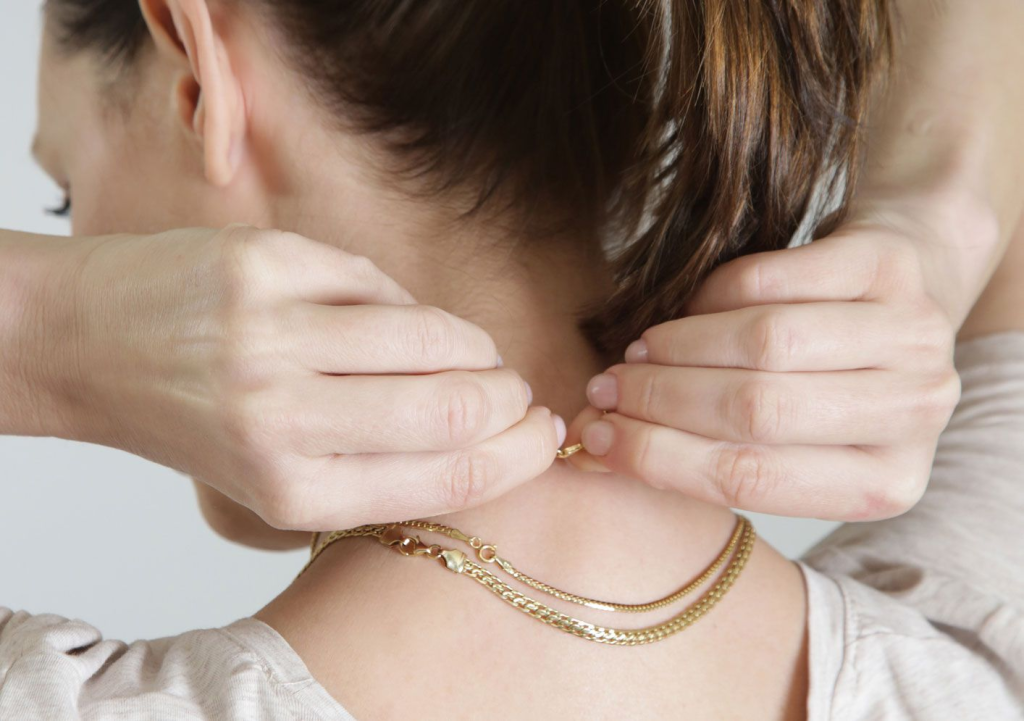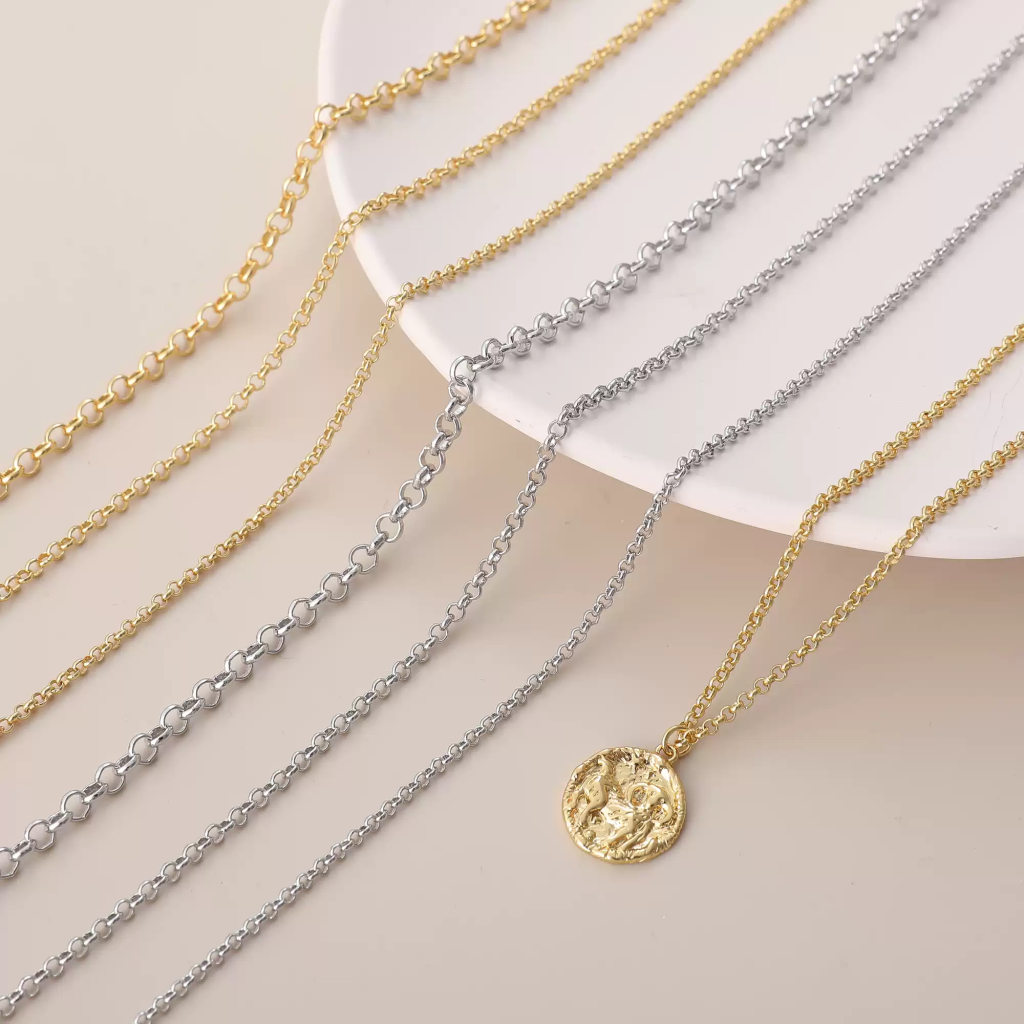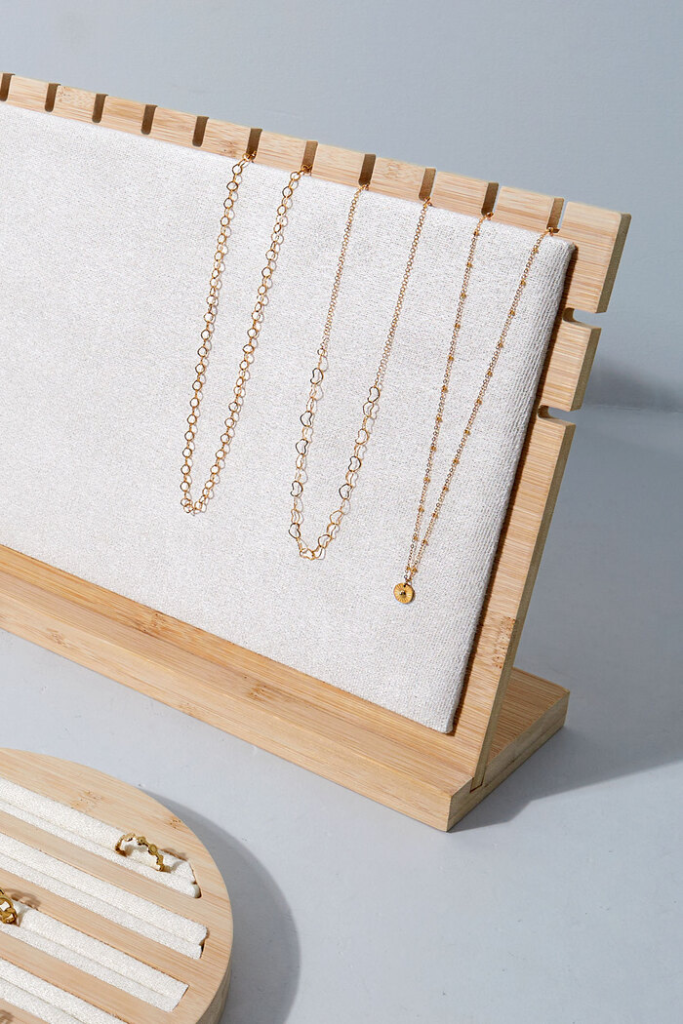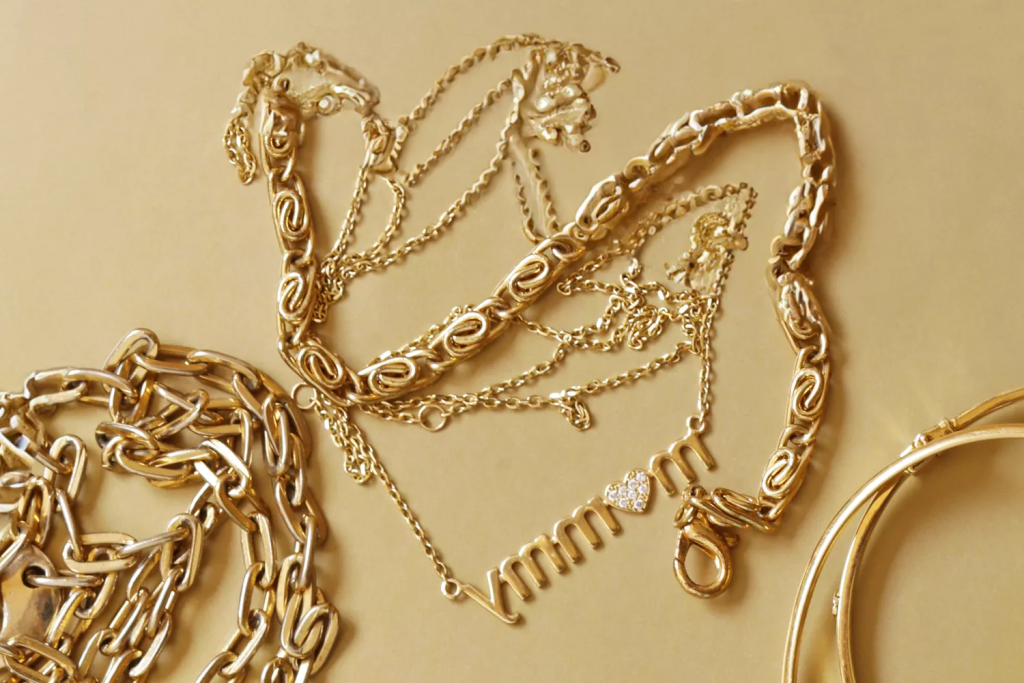Table of Contents
Every jewelry lover has encountered this situation: when we excitedly go to wear a necklace, we open the jewelry box only to find that the chain is tangled or knotted with other accessories. Untangling a knotted necklace can be quite a headache.
If not properly stored, some necklaces may get so tangled that they could be damaged during the process of untangling.
However, there are ways to prevent this from happening.
Causes of Necklace Tangling
Untangling a knotted necklace is a very troublesome task. The main cause of tangling is improper storage, where necklaces get mixed up together. For example, thin chain necklaces, especially those with pendants or beads, tend to get knotted easily. Multi-layer necklaces may twist together. The movement and friction of the necklaces exacerbate this effect, making the tangling tighter.
How to Prevent Necklaces from Tangling When Worn

If Your Necklace Gets Tangled in Your Hair
Bracelets, necklaces, anklets…anything with chains is afraid of two things: getting tangled with hair and getting knotted and tangled up. If your necklace gets tangled with hair, here’s what to do:
- Use leave-in conditioner or hand cream you carry with you. Rub it on the tangled area to increase lubrication, and the knots will easily come undone.
- Quickly pass a lighter over the area with hair, and the hair will burn off. Be careful not to concentrate the heat in one spot continuously, as finer chains might risk melting.
If Your Pendant Keeps Twisting to the Front
Many people like to wear different pieces of jewelry to accentuate their outfits. A common issue with pendant necklaces is that the clasp suddenly ends up in the front as the chain moves. This happens because the clasp may be heavier than the chain itself. To prevent this, look for necklaces with counterweights on the clasp, or add one yourself. A counterweight can be anything attached to the clasp, such as an ornament, metal ball, or bead. If your necklace doesn’t have a counterweight, you can buy ornaments online or at craft stores and attach them with tweezers.
Tangled Layered Necklaces
Who else loves layering delicate necklaces? But during wear, different parts may get completely twisted. Here are a few tips to keep all your delicate necklaces in order:
- Just like with length, you can mix different weights of chains and pendants. Wear lightweight chains paired with heavier chains or chains with heavy pendants or ornaments. The different weights of the chains will ensure each chain stays in place and doesn’t tangle with the others.
- Don’t put the chains on one by one. Open two necklaces, clasp the first necklace to the non-clasp end of the second necklace, forming a super long chain. Then, wrap the shorter necklace tightly around your neck, letting the longer necklace hang down. The necklaces will stay in place, won’t tangle, and will be arranged in the order you want.
The simplest things will stay with us in the end, so remember these tips to keep your necklaces from tangling when worn.
How to Travel with Jewelry Without Getting Tangled
Traveling should be a joyful experience, filled with new opportunities. You shouldn’t waste time untangling a bunch of jewelry before heading out for an adventure.
Keeping necklaces untangled while traveling can be a challenge. Finding your favorite pendant’s delicate chain tightly knotted when you open your suitcase can be quite disheartening.
However, with the right techniques and tools, you can ensure your jewelry arrives at your destination intact.

Dedicated Jewelry Boxes
There are many jewelry boxes on the market specifically designed to protect your jewelry. These boxes usually have dedicated compartments for earrings and bracelets, as well as special sections to prevent necklaces from tangling.
Jewelry boxes are typically compact, lightweight, and easy to pack in your carry-on bag.
But what if you’re short on time and don’t have a dedicated jewelry box or jewelry roll? What if you decide to bring your beloved accessories at the last minute and don’t have time to run out and buy a special box for the trip?
Tips for Protecting Jewelry While Traveling
Most of us have some items at home that can be used to prevent necklaces from tangling and to protect our favorite jewelry while traveling. Next time you travel, you can try:
Flat Lay Method: Lay each necklace on a sheet of tissue paper, cover it with another sheet of tissue paper, and press it flat inside a book or a flat container to prevent them from moving and tangling.
Plastic Wrap Method: You can use plastic wrap from your kitchen to make your own jewelry roll. Simply use a sheet of plastic wrap long enough for the necklace ends to extend to both sides, then roll the necklace into it.
Straw Method: This method is especially suitable for delicate chain necklaces. Simply thread the chain through a straw and re-clasp it at both ends.
Toilet Paper Roll Method: This method is similar to the straw method, but it also works for chains that are too thick to fit into a straw and chain bracelets that are too short to fit into a straw.
Sandwich Bag Method: If you’re really in a hurry, you might just want to prepare an individual sandwich bag for each piece of jewelry you’re bringing. It may not look as fancy as a dedicated jewelry box, but it will keep your jewelry safe.
Original Packaging: If you still have the original packaging or pouches for your necklaces, you will find that your necklaces arrive at your destination just as you packed them, ready to wear.
Pill Box Method: A pill box with multiple compartments is a great compact way to separate each piece of jewelry to avoid tangling.
Remember, the key is to prevent movement that could cause tangling. By taking these proactive measures, you’ll be able to quickly and easily access your jewelry, ready to wear and look your best upon arrival.
How to Effectively Store Your Jewelry
To prevent necklaces from becoming tangled messes, choosing practical jewelry boxes or exploring other storage methods can maintain the beauty and durability of your jewelry.

Choosing a Jewelry Box
Select a jewelry box with multiple compartments inside to keep each necklace separated. Look for boxes with dedicated compartments designed specifically for necklaces, ensuring each necklace has enough space to lay flat. It’s ideal for the interior of the box to be lined with soft fabric to protect the jewelry from scratches. If your jewelry collection is extensive, consider using a larger box with multiple layers of storage space, providing compartments of various sizes suitable for different lengths and styles of necklaces.
Alternative Necklace Storage Ideas
If traditional jewelry boxes don’t meet your needs, consider a dedicated necklace hanger. Hang each necklace on individual hooks to prevent any potential tangling.
You can also try using transparent plastic zip-lock bags, with each necklace placed in its own clear pocket. This not only provides separate space for each piece of jewelry but also reduces the risk of oxidation and discoloration.
For creative options, repurpose household items like cup racks or picture frames with hooks as unique and practical jewelry organizers, blending storage with style.
Special Care Requirements for Jewelry Storage
Pearls
Pearls can easily lose their luster. When storing them, avoid contact with plastic bags and other chemicals. It’s best to keep them in a velvet pouch or silk bag to maintain dryness and cleanliness.
Silver Jewelry
Silver jewelry is prone to oxidation and turning black. Store it in an anti-tarnish sealed bag and include an anti-tarnish strip (like a silver anti-tarnish cloth) to slow down the oxidation process.
Precious Gemstones
Precious gemstones such as diamonds, rubies, and sapphires should be stored separately in a jewelry box with soft padding to prevent friction and damage.
Protecting Necklaces from Damage
Protecting necklaces from moisture and extreme temperatures not only preserves their beauty but also extends their lifespan. This is especially important for necklaces made of metal, leather, or pearls.
Storage
Always hang or lay necklaces flat to prevent tangling. Use separate hooks or compartments to prevent them from tangling with other jewelry.
Material Care
For metals like gold or silver, maintain their shine to prevent them from losing luster. For pearl necklaces, avoid contact with chemicals and moisture that can corrode their luster.
Effective jewelry storage involves choosing appropriate storage tools and methods to avoid direct sunlight, moisture, and chemical exposure. These care tips will help your jewelry maintain its appearance and prevent tangling.
How to untangle jewelry
Even with precautions, necklaces can still get tangled. If your necklace is tangled, here are some tips to untangle it:

Use a Needle or Thin Rod
Place the chain on a flat surface like a kitchen counter or desk. Insert a needle or thin rod into the knot and gently tap between the chain and the knot with a pin. Repeat this gently until the knot starts to loosen enough for tweezers to be inserted. Use tweezers to further open the knot until it can be untangled.
DIY Lubricant and Tools
You can make a homemade lubricant with a small amount of baby oil, olive oil, or mineral oil. Apply a few drops to the knot and work it in. Use two needles carefully to pull the knot apart.
For tougher knots, baby powder can provide additional lubrication. Sprinkle baby powder on the knot to help the chain slide more easily and prevent further tangling.
Remember to clean off any residue after untangling.
Summary
These techniques can help you tidy up and untangle your jewelry collection, making it easier to find your favorite pieces and get out the door faster.
